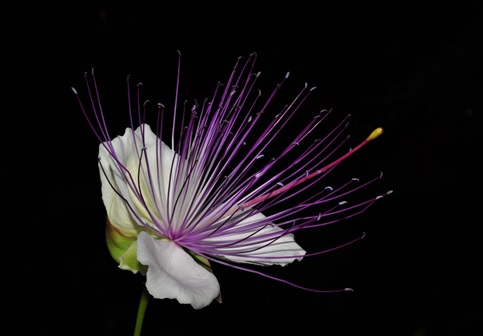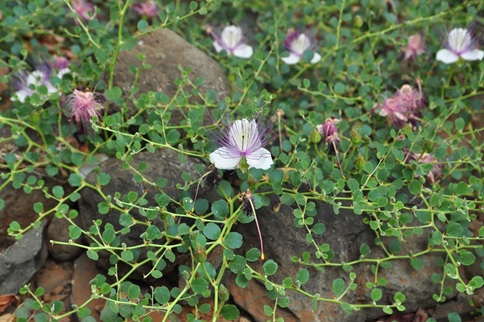A new study which retraced the phytogeographic history of Kapok buds or Capers, a spice used in South Indian rice dish "Bisi Bele Bath” and also a natural component of Liv 52 medicine, found that the genus has undergone a protracted evolution and has suggested its reclassification.
India, with its rich biodiversity and diverse ecosystems, is home to many plant species. Capers (Capparis spp.) occupy a special position among these fascinating botanical marvels. Capers, which belong to the family Capparaceae, have a long history interwoven with human culture, culinary traditions, and medicinal applications. In addition, they have been an essential element of Indian culture for centuries. The unopened flower buds, fruit, and juvenile shoots are used to add flavour to pickles, chutneys, and other traditional dishes. Their distinctive sour and salty character imparts a distinctive flavour to various dishes, making them highly desirable in regional and international cuisines. Since ancient times, traditional Indian medical systems such as Ayurveda and Siddha have acknowledged the therapeutic value of capers. The root, bark, and fruit of the plant are used to manufacture herbal remedies for ailments such as digestive disorders, skin diseases, and respiratory disorders.
Modern methodologies in plant biology have yielded valuable insights into the phylogenetic relationships among several medicinally significant plants. Studies based on DNA analysis have revealed the evolutionary history of these plants and traced their interrelationships with closely related species in various geographic regions. In recently published research by the Agharkar Research Institute in Pune, India, under the leadership of Dr. R.K. Choudhary, the phylogeny and evolution of capers in India were investigated, providing an insightful glimpse into their evolutionary journey and natural significance.
The intriguing molecular evolution of capers demonstrates how plants can adapt to their environment over time. Capers are believed to have originated in the Mediterranean and Central Asian arid and semiarid regions. Over time, their dispersion and diversification led to their presence in various regions of the globe, including the Indian subcontinent. Using three chloroplast genome markers, the researchers established a reliable phylogeny (say evolutionary history) of the genus Capparis in their study. These data indicate that Capparis originated on the Indian Peninsula about 29.32 million years ago. It supports the notion of movement into and out of India and verifies Jacob's (1965) hypothesis that Capers may have originated in Southern India/ Ceylon or Gondwana. As morphological and molecular data suggested, the study further proposed that the genus Capparis be reclassified. In addition, it demonstrated that the plant's floral structure and colour significantly impact its pollination success.
The phytogeographic history of capers in India is an enthralling tale entwined with human culture, culinary traditions, and traditional medicine. Exploring their genetic ties, ecological adaptations, and cultural significance improves our comprehension of their role in the natural world and highlights the importance of conservation efforts. As we delve deeper into the intricacies of capers, we uncover their past secrets and uncover their future sustainability potential. Capers have undergone a protracted period of evolution.
Despite their adaptability to severe environments, several species of capers in India are threatened by habitat loss, deforestation, and unsustainable harvesting methods. Efforts to preserve the unique genetic diversity of capers in India are crucial. In addition, sustained research into their phylogeny, genetics, and ecological interactions will increase our knowledge of these unique plants and contribute to their conservation and sustainable use.
Modern methodologies in plant biology have yielded valuable insights into the phylogenetic relationships among several medicinally significant plants. Studies based on DNA analysis have revealed the evolutionary history of these plants and cast light on their interrelationships with closely related species in various geographic regions.
Additionally, caper extracts have demonstrated antimicrobial, antioxidant, and anticancer properties, garnering the interest of contemporary scientific research. In India, there are 35 species of capers, including the well-known medicinal plant Capparis spinosa, a key component of the renowned medicine Liv-52. The plant's various parts, including its flower buds, leaves, and fruits, possess a rich array of bioactive compounds that contribute to its therapeutic properties. In traditional herbal medicine, capers have been employed for their anti-inflammatory, antioxidant, and antimicrobial effects. The buds are known for their diuretic properties and have been utilized to alleviate conditions such as oedema and urinary tract infections. Additionally, capers have been used as digestive aids, with their bitter components stimulating appetite and promoting digestion. Research suggests that the plant's phytochemical constituents, such as flavonoids and alkaloids, may also possess potential anticancer and cardiovascular benefits. Moreover, capers have found applications beyond medicine, including their use in skincare products due to their antioxidant properties. As scientific exploration continues, further understanding of the medicinal potential of Capers may uncover new therapeutic applications, solidifying their status as a valuable botanical resource.
Publication Link: https://www.sciencedirect.com/science/article/abs/pii/S1433831923000045


Fig.: Capparis spinosa photographed at Tamhini Ghat, Maharashtra






























